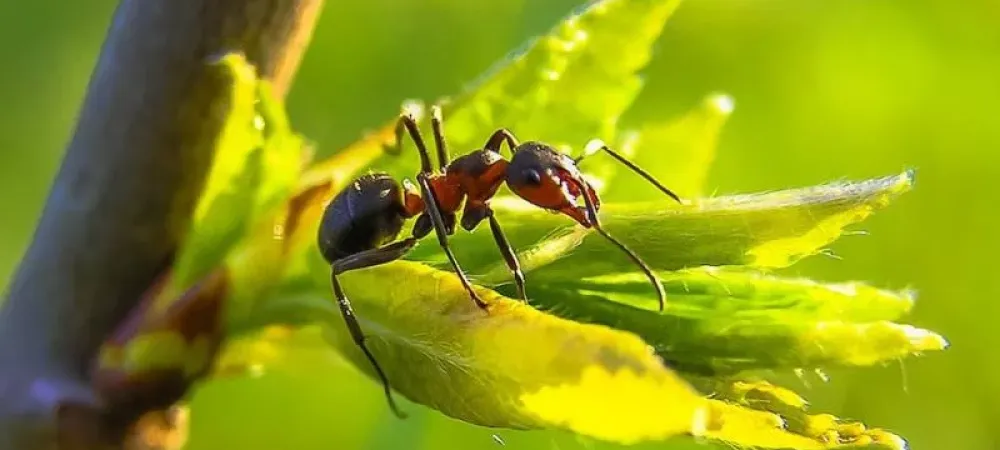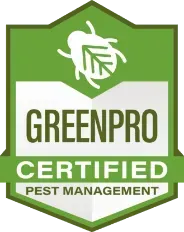Common Types of Ants in Utah

The arid climate of Utah makes it ideal for ants, making it home to over 150 different species. Fortunately for Utah homeowners, only about five native ant species cause major problems in and around your home.
Pavement Ants
The most common type of ant in Utah is the pavement ant, which gets its name from the common habit of nesting in soil beside paved areas like pools, patios, and sidewalks, although they can nest in any patch of soil. While these ants aren’t dangerous, they are extremely persistent at finding their way into homes and buildings.
Carpenter Ants
A colony of carpenter ants can be especially destructive if it establishes in your home. While carpenter ants don’t eat wood like termites do, they will chew through it. When they do, they leave behind a sawdust-like substance called frass. Unlike many ants, carpenter ants can develop wings for the purposes of swarming, so if you see winged ants and what looks like sawdust piled along baseboards, door jams, and windowsills, there’s a good chance you have carpenter ants.
Harvester Ants
While harvester ants don’t invade homes, they don’t need to come inside to be a problem. These large ants, which can grow to ½” in length, can be aggressive when disturbed and are equipped with a painful sting they sometimes leave inside their victim. Harvester ants are omnivores, eating both seeds and other insects, and are frequently found in open areas like parks, lawns, and playgrounds.
Field Ants
Although sometimes mistaken for carpenter ants, field ants are less likely to come inside homes, although they will in search of food. Common to lawns and other grassy areas, field ants are often identified by their unique mounds constructed from leaves and twigs. They are mainly considered a nuisance due to their large swarming flights.
Velvety Tree Ants
Named for both their appearance and habit of nesting in hollow trees, velvety tree ants are also sometimes confused with carpenter ants, as they can sometimes be found residing in the walls of homes where they come in search of water. These ants mainly dine on other insects and carrion, but are also fond of sweet, sugary substances. Velvety tree ants are an exceptionally aggressive species that not only deliver a painful bite, but spray an irritating secretion into the wound that makes it hurt even worse. A home infestation of velvety tree ants can often be identified by a foul odor.
How to Get Rid of Ants
If you have ants in your home, here are a few things you can try to get rid of them:
- White vinegar: Three parts water to one part vinegar can be effective in repelling ants and covering up the scent trail they follow when they invade your home. The downside is that your home will smell like vinegar.
- Borax: This popular laundry additive is deadly to ants. Sprinkle some along trails where you see ants for an instant, lethal effect. To kill ants in the colony, mix the borax with confectioners sugar so they’ll take it home. While borax can be effective, colonies can be large and it’s unlikely that you’ll kill it entirely. Additionally, Borax is toxic to pets and children, so be careful.
- Essential oils: Mint, clove, tea tree, and rosemary are among the essential oils that work to effectively repel ants. Similarly, while some oils, like tea tree, keep ants away, they aren’t safe to use around pets or kids.
- Bait stations: Many stores sell bait stations which can easily be set up around the house or near areas where you see activity. While these stations vary in effectiveness, they can also pose a threat to pets and children if ingested.
- A professional pest control company: For effective, lasting ant control, partnering with a trusted pest control company like Western Pest Control is the only guaranteed solution to the problem of annoying or potentially dangerous ants.
FAQs About Ants
Termites vs Carpenter Ants
Termites and carpenter ants look alike and are easily confused—however, there are differences. Carpenter ants are dark brown, while termites are pale to cream-colored. But the biggest difference is in behavior. Carpenter ants don’t eat wood—they burrow through it and leave piles of discarded dust behind. Carpenter ants also attack soft or moist wood, while termites will enthusiastically eat dry wood. Termites also leave mud-like tubes along the sides of your home, while carpenter ants do not.
If you suspect you have termites, it’s important to have a free inspection done quickly.
What do Ant Bites or Stings look like?
An ant bite or sting usually manifests as a swollen red bump and may develop a pus-filled blister at the top. Stings or bites may cause pain, itching, or an allergic reaction.
Are Ants dangerous?
Ants can be dangerous, especially to those sensitive to their venom. Reactions can be localized with swelling and pain or systemic, with difficulty breathing and in severe cases, even shock. If you are bitten by ants and suffer a serious reaction, immediately contact Poison Control at 1-800-222-1222.
What are Flying Ants?
When the colonies of some ant species become too large, the ants develop wings and swarm. These ants are called “alates”. Both mature male and female ants are capable of developing wings and leaving to start new colonies.
Are there Fire Ants in Utah?
Fire ants belong to the genus Solenopsis, and while the most aggressive members of that species imported from South America are a problem in southern states, fortunately for Utah, they do not occur here. Utah does have five native species of Solenopsis ants, but they inhabit small colonies and are largely peaceful.


